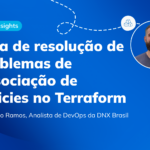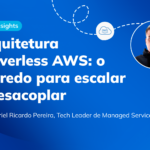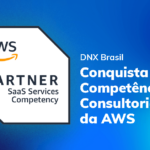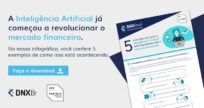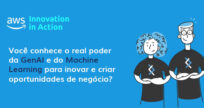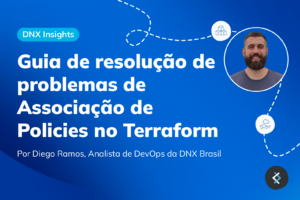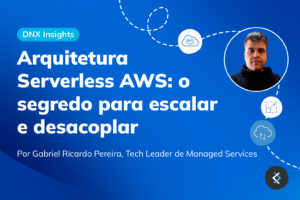
SEGURANÇA & COMPLIANCE
Melhore a segurança e a conformidade ao mesmo tempo em que adota tecnologias de nuvem
SEGURANÇA DNX
Tenha uma estratégia de segurança na nuvem que garanta a qualidade da segurança de dados na nuvem
Proteger seus dados, aplicativos e infraestrutura, se tornam cada vez mais importantes à medida que migramos para a nuvem. É necessário para o seu negócio construir uma estratégia de qualidade que garanta a segurança de dados e que alcance, por meio de políticas de segurança abrangentes uma cultura organizacional e de soluções de segurança em nuvem.
No entanto, ter conhecimento de todos esses protocolos e padrões de segurança e entender como aplicá-los pode ser difícil
É aí que nossa equipe certificada de engenheiros de cloud e dados vai ajudar nossos clientes a adotar, evoluir ou gerenciar aplicativos com segurança na nuvem.
A DNX Brasil é parceira AWS Well-Architected com muita experiência em criar soluções efetivas em segurança nas organizações.





BENEFÍCIOS
Conheça os benefícios das nossas soluções em segurança

Mantenha seus dados seguros
Adicione fortes safeguards para proteger sua privacidade.

Atenda aos requisitos de conformidade
A DNX gerencia programas de compliance em sua infraestrutura.

Economize Dinheiro
Obtenha a segurança de que precisa, mantenha os mais altos padrões com o menor custo.

Escale rapidamente
Escale e inove, mantendo um ambiente seguro. Não importa o tamanho do seu negócio.
DNX.ONE FOUNDATION
Habilite um ambiente de nuvem seguro e de conformidade por meio do DNX.One Foundation, Plataforma como Serviço

Segurança com compatibilidade real
Um ambiente compatível, seguro e sem complexidade.

Altamente escalável, seguro
e em conformidade
Construa uma plataforma confiável na AWS à medida que sua empresa cresce e a sua demanda aumenta.

Segurança e
controle
Gerenciamento de segurança e controle para manter seus negócios sob controle.

Design modular
dinâmico
Uma plataforma de open-souce modular, flexível e personalizável criada para a AWS.

Projetado para alta
disponibilidade
Aproveite a infraestrutura global da AWS para obter serviços confiáveis e altamente disponíveis.

Ambiente de nuvem
otimizado e econômico
Aproveite os serviços em nuvem mais otimizados e econômicos e, ao mesmo tempo, reduza os custos de operação.

CI/CD
dedicado
Automatize seu pipeline, implantando mais rapidamente e criando um ambiente consistente.
LIDERANDO O FUTURO
Soluções em nuvem para aumentar a sua segurança
Descubra as melhores soluções para dar suporte às suas necessidades de negócios enquanto cria e aproveita a segurança e a conformidade.

Prepare, adote ou evolua sua empresa para acessar e alavancar o Direito dos Dados do Consumidor
Habilite uma nuvem segura, escalável e compatível à medida que sua empresa cresce.
Aproveite o poder da nuvem para obter o valor completo da modernização.
BLOG
Explore os casos de sucesso da DNX
DEPOIMENTOS
Veja o valor que entregamos
aos nossos clientes
MAIS SOLUÇÕES
Explore outras soluções
Iniciar

Well-Architected ReviewDescubra como sua arquitetura em nuvem se adapta ao padrão AWS Well-Architected.

Cloud FoundationTenha uma nuvem escalável e compatível à medida que seu negócio cresce.
Evoluir

Application ModernizationAproveite o poder da nuvem para perceber o valor pleno da modernização.

Data Engineering & AnalyticsEngenharia de nuvem e dados para apoiar 0 cenário da sua modernização de dados.
Operação





